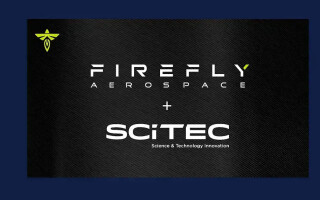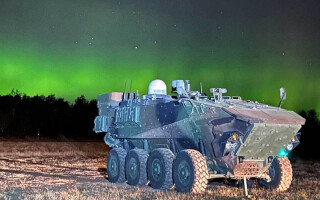Shape-shifting, foldable drones are on the way
StoryFebruary 18, 2019
Shape-shifting, foldable drones are on the way, thanks to a team of researchers from the Robotics and Perceptions Group at the University of Zurich (UZH) and the Laboratory of Intelligent Systems at ?cole Polytechnique F?d?rale de Lausanne (EPFL) in Switzerland.
The Swiss researchers have created a foldable drone that changes its shape to fit through gaps, cracks, or windows and then morphs back into its previous shape, all while continuing to fly.
The UZH team set out to create a drone that could go in and quickly inspect a damaged building after an earthquake, fire, or other types of disasters or emergencies instead of sending human rescuers into these dangerous situations. To do this, they wanted the drone to be able to enter a building by changing its shape to squeeze through a crack in a wall, a partially open window, or through bars, which is something that typical drones can’t do because of their size.
Although not touted as something for military use, as you can imagine that warfighters could easily find applications for this new type of drone because it can tailor its shape for specific environments or tasks on the fly.
Birds that fold their wings in midair to fly through narrow passages provided the inspiration for the drone’s design, which features a quadrotor with four propellers that rotate independently, mounted on mobile arms that can fold in around the main frame (thanks to servo motors). Another intriguing design feature is that the drone’s control system can adapt in real time to any new position of the arms by adjusting the thrust of its propellers as the center of gravity shifts.
The drone’s components include a Qualcomm Snapdragon Flight onboard computer that runs all of the algorithms necessary to fly, two cameras for localization and exploration, an inertial measurement unit (IMU), an Arduino Nano microcontroller, and the servo motors used to fold the its arms.
“Our solution is quite simple from a mechanical point of view, but it’s very versatile and autonomous, with onboard perception and control systems,” says Davide Falanga, a researcher at the University of Zurich.
In comparison to other drones, the team’s drone can maneuver in tight spaces and guarantee a stable flight at all times. To achieve this, the researchers exploited an optimal control strategy that adapts to the drone’s morphology on the fly. This allows the foldable drone to dynamically change its shape while flying. The controller doesn’t require any symmetry in the morphology because it can handle randomly generated morphologies. (Figure 1).
Figure 1: Pictured are shape-shifting drones performing a gap traverse. Credit: UZH.
This means that the shape-shifting drone “can adopt different configurations according to what’s needed in the field,” explains Stefano Mintchev, a researcher at EPFL.
What types of shapes can the drone shift into? Its standard configuration is X-shaped, with the four arms outstretched and the propellers at the widest possible distance from each other. But to navigate a narrow passage, it can switch to a “H” shape with its arms lined up along one axis, or to a “O” shape with all arms folded as close as possible to the body. Its “T” shape is particularly useful for getting the onboard camera mounted on the central frame as close as possible to objects so that the drone can inspect them. As an added bonus, the drone is capable of holding onto or transporting objects along the way.
This is the first step toward fully autonomous drone rescue searches, according to the researchers. They now hope to further improve the drone’s structure so that it can fold in three dimensions. And another big challenge they’d like to overcome is to develop algorithms that make the drone truly autonomous, allowing it to look for passages (routes) in real disaster scenarios and automatically choose the best way to maneuver through them on its own. “The final goal is to give the drone a high-level instruction such as ‘enter that building, inspect every room, and come back,’ and let it figure out by itself how to do it,” says Falanga.
Both research groups are part of the National Centre of Competence in Research (NCCR) Robotics, which is funded by the Swiss National Science Foundation.






